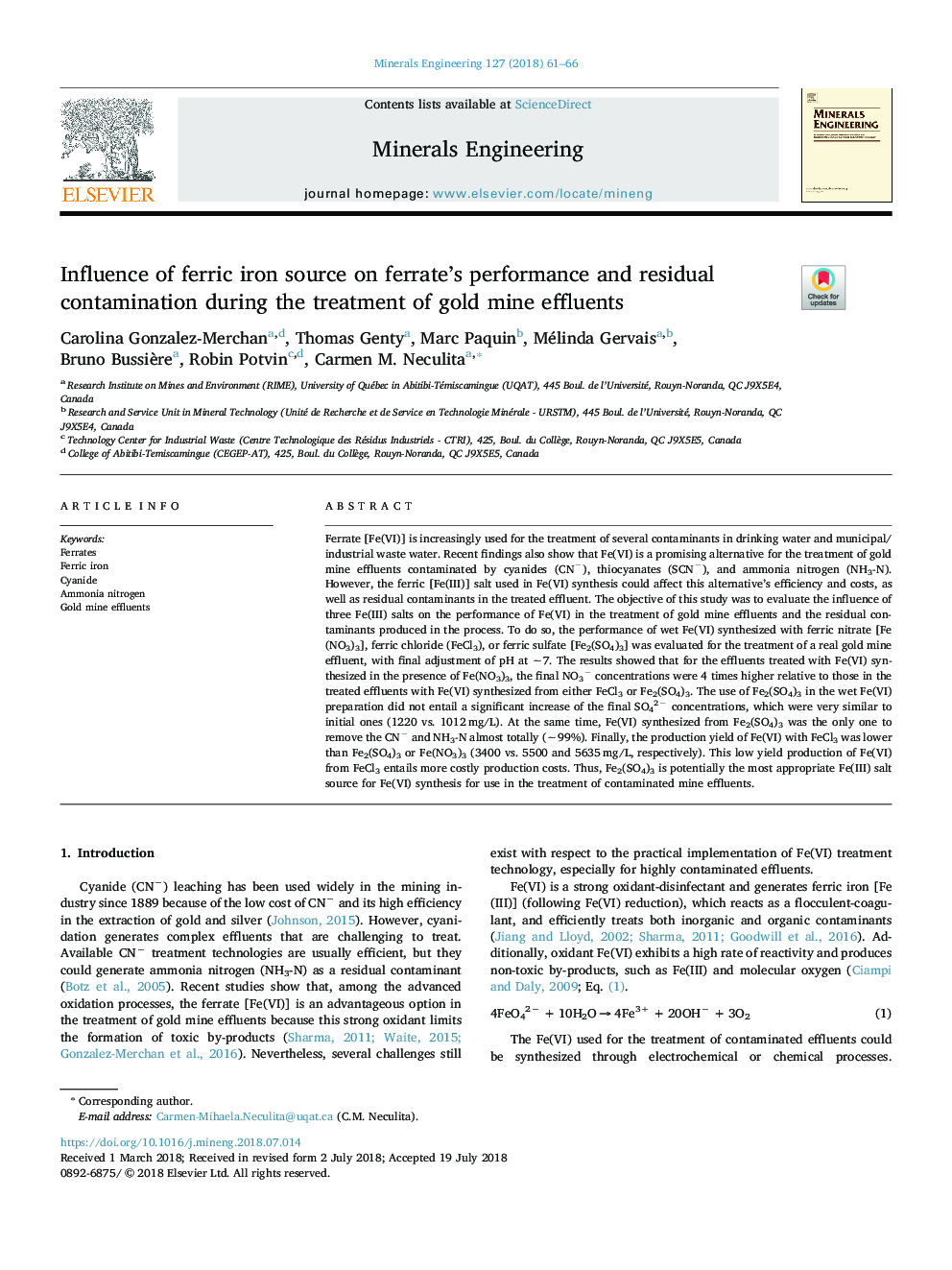| کد مقاله | کد نشریه | سال انتشار | مقاله انگلیسی | نسخه تمام متن |
|---|---|---|---|---|
| 6672082 | 1427585 | 2018 | 6 صفحه PDF | دانلود رایگان |
عنوان انگلیسی مقاله ISI
Influence of ferric iron source on ferrate's performance and residual contamination during the treatment of gold mine effluents
ترجمه فارسی عنوان
تأثیر آهن بر عملکرد فرات و آلودگی باقی مانده در طی درمان پساب معدن طلا
دانلود مقاله + سفارش ترجمه
دانلود مقاله ISI انگلیسی
رایگان برای ایرانیان
کلمات کلیدی
فریتا آهن آهن سیانید، نیتروژن آمونیاک، پساب معدن طلای،
موضوعات مرتبط
مهندسی و علوم پایه
مهندسی شیمی
مهندسی شیمی (عمومی)
چکیده انگلیسی
Ferrate [Fe(VI)] is increasingly used for the treatment of several contaminants in drinking water and municipal/industrial waste water. Recent findings also show that Fe(VI) is a promising alternative for the treatment of gold mine effluents contaminated by cyanides (CNâ), thiocyanates (SCNâ), and ammonia nitrogen (NH3-N). However, the ferric [Fe(III)] salt used in Fe(VI) synthesis could affect this alternative's efficiency and costs, as well as residual contaminants in the treated effluent. The objective of this study was to evaluate the influence of three Fe(III) salts on the performance of Fe(VI) in the treatment of gold mine effluents and the residual contaminants produced in the process. To do so, the performance of wet Fe(VI) synthesized with ferric nitrate [Fe(NO3)3], ferric chloride (FeCl3), or ferric sulfate [Fe2(SO4)3] was evaluated for the treatment of a real gold mine effluent, with final adjustment of pH at â¼7. The results showed that for the effluents treated with Fe(VI) synthesized in the presence of Fe(NO3)3, the final NO3â concentrations were 4 times higher relative to those in the treated effluents with Fe(VI) synthesized from either FeCl3 or Fe2(SO4)3. The use of Fe2(SO4)3 in the wet Fe(VI) preparation did not entail a significant increase of the final SO42â concentrations, which were very similar to initial ones (1220 vs. 1012â¯mg/L). At the same time, Fe(VI) synthesized from Fe2(SO4)3 was the only one to remove the CNâ and NH3-N almost totally (â¼99%). Finally, the production yield of Fe(VI) with FeCl3 was lower than Fe2(SO4)3 or Fe(NO3)3 (3400 vs. 5500 and 5635â¯mg/L, respectively). This low yield production of Fe(VI) from FeCl3 entails more costly production costs. Thus, Fe2(SO4)3 is potentially the most appropriate Fe(III) salt source for Fe(VI) synthesis for use in the treatment of contaminated mine effluents.
ناشر
Database: Elsevier - ScienceDirect (ساینس دایرکت)
Journal: Minerals Engineering - Volume 127, October 2018, Pages 61-66
Journal: Minerals Engineering - Volume 127, October 2018, Pages 61-66
نویسندگان
Carolina Gonzalez-Merchan, Thomas Genty, Marc Paquin, Mélinda Gervais, Bruno Bussière, Robin Potvin, Carmen M. Neculita,
